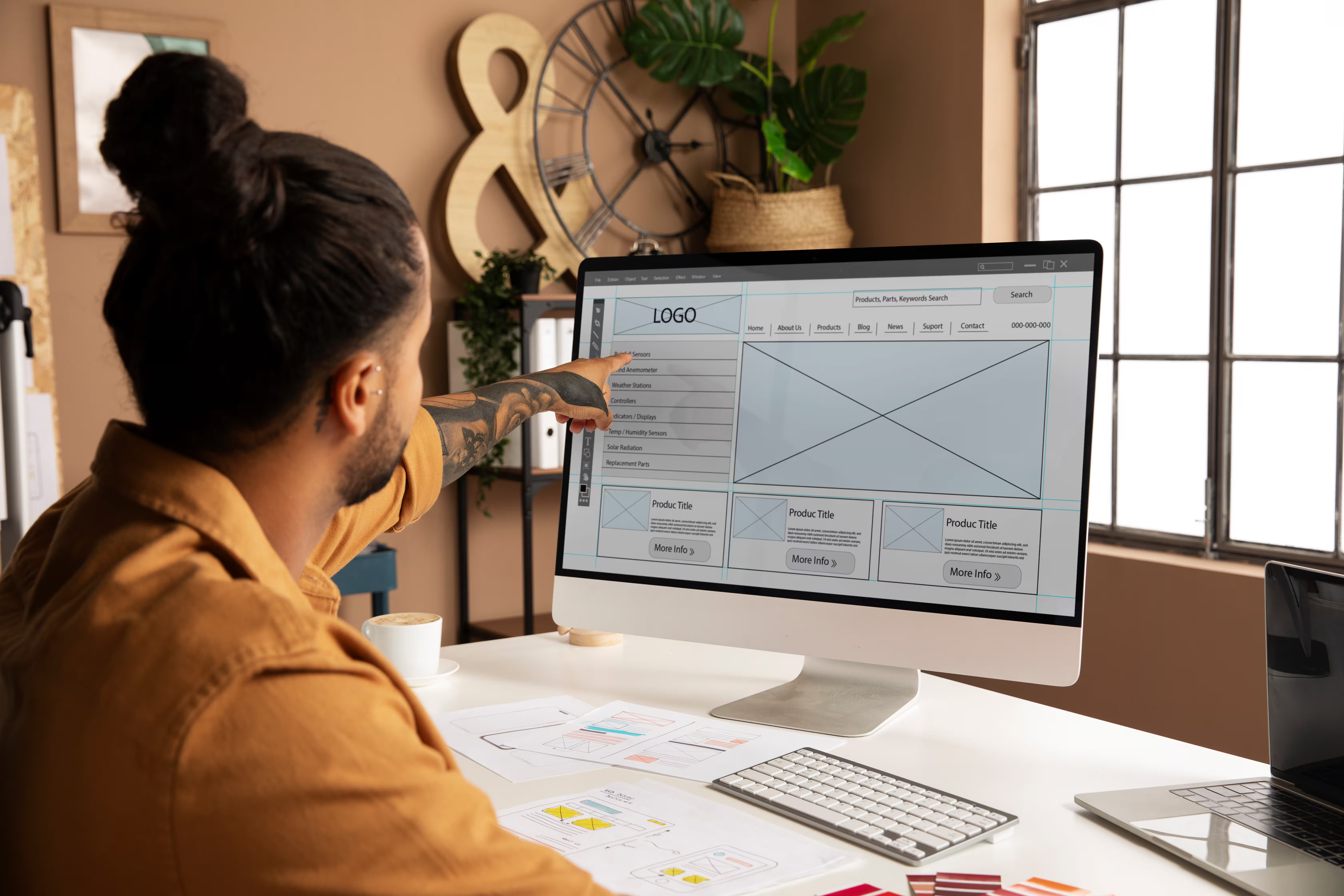That is exactly what user onboarding is all about. To ensure a seamless and easy experience for your audience, you must provide in-app tutorials or guide posts to help your customers navigate through the website or application. Thankfully, Webflow features different capabilities that allow you to create a simplified onboarding experience for your users.


Understanding the SaaS onboarding journey
SaaS customer onboarding can be described as a process where you guide users through your product and explain how everything works. The ultimate goal of this process is to familiarize them with the tool and enable them to get started with deriving value from it as soon as possible.
Now, there are three main steps involved in the SaaS onboarding journey. They include:
- Primary onboarding: This is the phase from signup to activation. Your target is to acquire as many new customers as possible and help them realize the value of your product in the shortest possible timeframe.
- Secondary onboarding: By now, your customers have already understood your offerings and are using them to solve their problems. It is now time to move to the second stage, where you introduce the hidden features that will help you exceed customer expectations.
- Tertiary onboarding: This is where you keep your customers engaged by regularly asking for feedback and ensuring that all their expectations are met.
Benefits of a well-designed onboarding experience
Here are some of the many benefits of creating a smooth Webflow user journey that facilitates a seamless SaaS onboarding experience:
- User retention:
A recent report revealed that as much as 55% of customers stop using a product or service they do not understand.
By creating a well-designed onboarding experience for your users, you help them understand how to use the product correctly, thereby reducing the chances of confusion or frustration. This leads to higher retention rates and ultimately drives revenue for your business.
- Customer satisfaction:
A memorable and enjoyable SaaS onboarding experience will automatically make users feel more connected to your brand, ultimately resulting in them becoming your long-term loyal customers. The more number of satisfied customers you are able to achieve, the higher the word-of-mouth referrals for your company.
- Reduced support costs:
By providing clear and concise instructions during the onboarding journey, you reduce the likelihood of customers asking for additional support requests. This not only reduces the costs of hiring personnel to manage this area but also allows you to focus your resources and time on your business's other pressing issues.
Webflow features for designing onboarding experiences

Webflow has some amazing features and capabilities that you can use to create a seamless SaaS onboarding experience for your customers. Take a look at this, for example.
Webflow integrates the robust power of CSS and Javascript into one visual tool that enables you to create interactions and animations without needing any code. You can link your animations and motion to scroll pages to achieve effects such as a progress bar, parallax, and more. It also facilitates the creation of precise microinteractions, like button presses or hover states, to make the user experience as interactive as possible.
But wait, this is not all. Webflow boasts a wide range of free and premium website templates that offer a great starting point for the design side of things.
The best part? They are completely customizable. All you need to do is select a template that will get added to your dashboard as a new brand site, and then you can make changes based on your preferences.
More often than not, editing templates that use complex interactions often get challenging. If you ever find yourself in this situation, do not forget to contact the template creator, which you can access directly from Webflow’s template marketplace.
Creating an onboarding flow in Webflow
The process of creating a SaaS onboarding flow in Webflow is not really that complex. Here are the crucial steps to get started:
- Define your goals: Create clear, measurable, and time-bound goals for your onboarding process. You can utilize the SMART (Specific, Measurable, Attainable, Relevant, Time-bound) framework, for this purpose.
- Map the user journey: Break down the user journey into small but detailed steps and create a journey map from signup or log-in to exploring core features.
- Design the onboarding screens: Use Webflow Designer to add the essential elements to each step of the onboarding process. These can include anything from form fields, such as drop-downs or checkboxes, to interaction triggers, such as button clicks.
- Test and iterate: Review the effectiveness of your SaaS onboarding flows by running iterative testing sessions, such as A/B tests. Collect the necessary feedback and make changes as required.
Best practices for onboarding design
Here are a few tips and tricks on how you can create a positive SaaS onboarding experience and increase customer satisfaction:
- Personalization:
Personalization in the Webflow user journey is not really about adding personal touches to the flow, like the ‘first name’ tags. It’s more about how aware you are of your consumer’s needs and how you can reflect that by customizing the flow.
Let’s consider that you have an email marketing tool and two new users. One of them is someone completely new to this field, without any knowledge about how an email marketing tool works. The other is an experienced professional who, supposedly, owns an e-commerce business and is in search of a good email marketing tool.
The onboarding experience for both of these individuals will be very different. The beginner will definitely want to watch any short onboarding video where they can learn how to may be set up a sign up form to collect their subscribers.
However, this might not be the case for seasoned players. They will simply focus on where to set up their email list and how quickly they can start their email campaign.
- Micro-learning:
Consider implementing micro-learning to guarantee success in the SaaS onboarding journey. For example, you can include videos, infographics, or even quizzes and tooltips that will help create a great Webflow user journey. You can also incorporate interactive walk-throughs that will push users to complete certain actions before continuing the journey.
- Progress indicators:
Progress bars are simple indicators of how much the users have completed the onboarding process and how much more is left. While this feature might not seem much at first glance, it carries tremendous value, especially in the SaaS onboarding experience. One primary reason is that it helps to keep your customers motivated and aware of their progress.
To make things even better, you can also include a small incentive at the end to reward users for the tasks they completed. This can be anything from a discount voucher to additional credits.
- Clear call-to-actions:
Give users a clear and concise call to action. Place them somewhere where customers can easily find them, and do not forget to maintain consistency throughout the entire Webflow user journey.
Overcoming common onboarding challenges
Mentioned below are some of the most commonly faced SaaS onboarding challenges and how you can successfully overcome them.
Future trends in SaaS onboarding

- AI and personalization: AI-powered onboarding assistants utilize machine learning to adapt to each user’s unique needs, thereby simplifying complex processes.
- Gamification: To make the Webflow user journey more interactive and interesting for consumers, many businesses have switched to incorporating elements such as points, badges, incentives, and even rewards.
- Continuous onboarding: The SaaS onboarding journey does not simply end with the initial setup. Instead, it is an iterative process wherein you continuously update your customers with new features or best practices through ongoing education and training.
Conclusion
The SaaS onboarding journey is more than just a formality. It is the very first impression that determines how users will view your business as a whole. Whether you opt for a gamified onboarding experience or a multi-step interactive approach, the goal remains the same - providing users with the best possible experience to start their journey with your service.
Frequently asked questions
How can Webflow improve my SaaS onboarding experience?
Webflow features several capabilities, such as interactions and animations, customizable templates, and forms, all of which are essential to building a smooth and successful SaaS onboarding experience.
What are the key elements of a successful onboarding experience?
Clear and engaging content, user-centric design, clear CTAs, progress indicators, and, most importantly, continuous onboarding are some of the must-haves for a successful SaaS onboarding experience.
What are some common SaaS onboarding challenges?
User friction and a lengthy signup process are two of the most commonly faced SaaS onboarding challenges. You need to keep the signup process short and simple so that your customers can quickly learn how your product works. Additionally, you need to conduct extensive tests and experiments to identify potential friction points in the user journey and remove them as soon as possible.




















